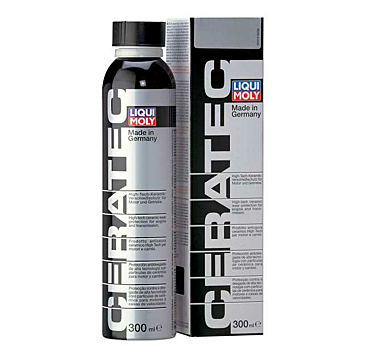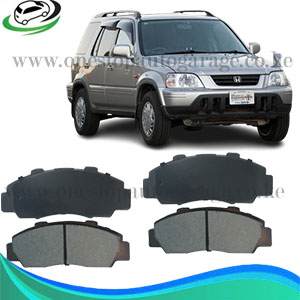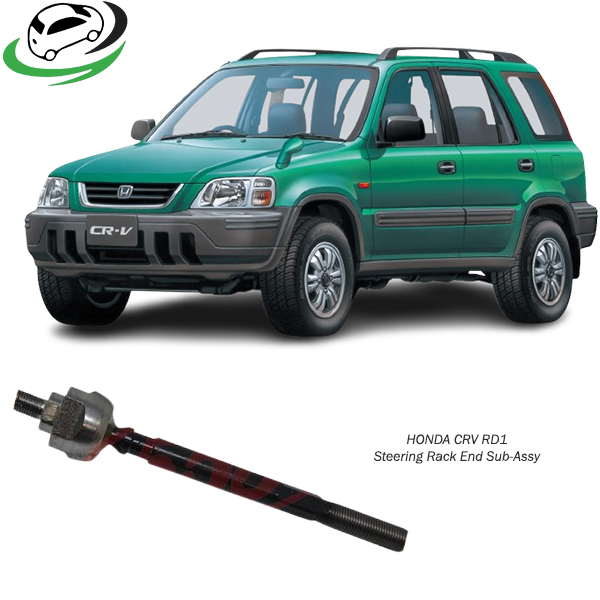-20%
Get Honda CR-V RD1 Steering Rack End Sub-Assy SR6220
The Steering Rack End Sub-Assembly is a crucial component of a vehicle’s steering system. This sub-assembly plays a key role in ensuring that the steering mechanism is both responsive and reliable. Understanding how it works, its benefits, and how to maintain it can help in ensuring the smooth operation of a vehicle. Below is a detailed explanation of the steering rack end sub-assembly, covering its components, functions, benefits, signs of wear, and maintenance tips.
1. Components of the Steering Rack End Sub-Assembly
The steering rack end sub-assembly is part of a larger steering system known as the rack and pinion system. This system consists of several critical components that work together to transfer the driver’s input from the steering wheel to the wheels. Key components include:
- Steering Rack: The core component in the rack and pinion system. It is a long metal bar that connects the steering gear to the tie rods, translating rotational motion from the steering wheel into linear motion to turn the wheels.
- Inner Tie Rod: Attached to the steering rack, the inner tie rod is responsible for transferring the steering input from the rack to the outer tie rod.
- Outer Tie Rod: This connects the inner tie rod to the steering knuckle, allowing the wheels to pivot when the steering wheel is turned.
- Rack End Boot: Also known as a bellows boot, it protects the rack and inner tie rods from dirt, debris, and contaminants, helping to extend the life of the steering system.
2. Functions of the Steering Rack End Sub-Assembly
The steering rack end sub-assembly primarily functions to:
- Translate Driver Input to Wheel Movement: When a driver turns the steering wheel, the steering shaft transfers this rotational motion into the steering gear, which then moves the rack. This motion is transmitted to the tie rods, which push or pull the wheels, causing them to turn in the desired direction.
- Maintain Precise Steering Control: The sub-assembly ensures that the wheels respond to even slight adjustments made by the driver. Precision in the rack and pinion system is essential for smooth, responsive steering.
- Absorb Impact and Stress: As the vehicle moves, especially over rough terrain, the steering system absorbs a significant amount of stress. The steering rack end sub-assembly helps distribute this stress evenly, preventing excessive wear on other steering components.
3. Benefits of the Steering Rack End Sub-Assembly
Several benefits come from using a steering rack end sub-assembly, especially within a rack and pinion steering system. These include:
- Enhanced Steering Precision: The sub-assembly ensures the driver has precise control over the vehicle. Even small inputs to the steering wheel result in predictable and accurate wheel movements.
- Increased Durability: The steering rack end sub-assembly is designed to withstand the forces exerted on the steering system. Its robust construction and the inclusion of protective components, such as boots, extend the life of the overall steering mechanism.
- Improved Vehicle Stability: The accurate transfer of motion from the steering wheel to the wheels ensures the vehicle maintains stability, especially during sharp turns or when driving at high speeds.
- Better Road Feel: Vehicles equipped with a high-quality steering rack end sub-assembly provide the driver with a better “feel” for the road. This feedback helps in making necessary adjustments during driving and contributes to overall safety.
- Space Efficiency: The rack and pinion system, including the steering rack end sub-assembly, is compact and efficient. This allows it to fit into most modern vehicles without taking up much space, freeing up room for other components.
4. Signs of Wear in the Steering Rack End Sub-Assembly
Like all mechanical parts, the steering rack end sub-assembly is subject to wear and tear. Recognizing the early signs of damage or failure can prevent further issues with the vehicle’s steering system. Some common signs of wear include:
- Loose or Unresponsive Steering: If the steering feels loose or unresponsive, it could indicate that the steering rack or tie rods are worn out. The steering rack end sub-assembly may no longer transfer motion as efficiently, leading to a lack of control.
- Vibration or Shaking While Driving: If the vehicle vibrates or shakes, especially when driving over uneven surfaces, it could be a sign that the inner or outer tie rods have deteriorated.
- Uneven Tire Wear: Misalignment caused by a faulty steering rack end sub-assembly can lead to uneven tire wear, which affects the vehicle’s handling and fuel efficiency.
- Clunking or Knocking Noises: Worn-out tie rods or a damaged rack can produce clunking or knocking noises when turning the steering wheel or driving over bumps.
- Fluid Leaks: Hydraulic power steering systems use fluid to assist in steering. If the steering rack end sub-assembly is damaged, it may leak power steering fluid, leading to decreased steering performance and potential damage to the entire system.
5. Maintenance Tips for the Steering Rack End Sub-Assembly
Maintaining the steering rack end sub-assembly is essential for prolonging the life of the entire steering system and ensuring safe vehicle operation. Below are some key maintenance tips:
- Regular Inspections: Periodically inspect the steering rack and tie rods for signs of wear, damage, or leakage. Pay special attention to the boots (bellows), as these are prone to cracking or splitting due to constant exposure to dirt, moisture, and extreme temperatures.
- Check and Replace Power Steering Fluid: If your vehicle uses hydraulic power steering, regularly check the power steering fluid levels and replace the fluid as recommended by the manufacturer. Low fluid levels or contaminated fluid can cause the steering system to wear out faster.
- Align and Balance the Wheels: Proper alignment and wheel balancing are essential for ensuring the steering system works effectively. Misalignment can place excessive stress on the steering rack end sub-assembly, causing it to wear prematurely.
- Lubrication: Ensure that all moving parts in the steering rack end sub-assembly are properly lubricated. Some systems are designed to be self-lubricating, while others may require periodic lubrication.
- Replace Worn Components: If any component within the steering rack end sub-assembly, such as the inner or outer tie rods, shows signs of wear, replace them immediately. This helps prevent further damage to the steering system.
- Keep the Boot Intact: The rack end boot or bellows is a protective component that shields the steering system from contaminants. If the boot is torn or damaged, dirt and moisture can enter the system, leading to corrosion and wear. Replace damaged boots promptly.
Conclusion
The Steering Rack End Sub-Assembly is a vital part of a vehicle’s steering system. By translating the driver’s inputs into precise movements of the wheels, it ensures that the vehicle remains stable, responsive, and easy to control. Maintaining this component through regular inspections, timely replacements, and proper care of related parts like the tie rods and bellows is key to preserving the efficiency and longevity of the steering system. Whether it’s for daily driving or performance use, a well-maintained steering rack end sub-assembly contributes to a safer and more enjoyable driving experience.
Follow us on Facebook for more parts.



